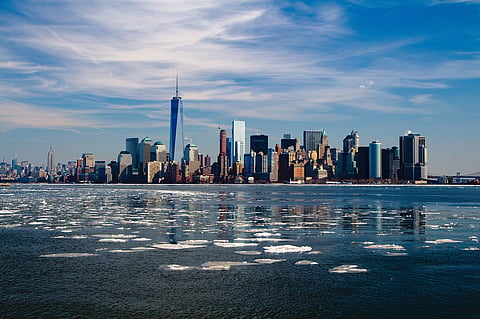Leading the Charge: The Most Sustainable Cities in the US
Sustainability is more than a buzzword; it's a necessity in our rapidly changing world. With climate change at the forefront of global discussions, American cities are stepping up their green initiatives. Whether you're planning to move or just curious about which cities are leading the way in sustainable living, this article explores some of America's most sustainable cities based on green initiatives, infrastructure, and community engagement.
The Most Sustainable Cities in the US
1. Portland, Oregon
Portland leads the nation in many aspects of sustainability. It was the first American city to enact a comprehensive plan to reduce carbon emissions. Known for its bike-friendly streets and abundant public transport options, Portland is a paradise for eco-conscious commuters.
2. San Francisco, California
San Francisco's tech-savvy approach to sustainability places it firmly on this list. A pioneer in banning plastic bags and promoting zero waste, the city aims to be waste-free by 2030. Moreover, the public transport system, including the iconic cable cars, often run on renewable energy, underscoring its commitment to green living.
3. Minneapolis, Minnesota
Surprising to some, Minneapolis excels in sustainability. It has implemented extensive bike lanes and bike-share programs, encouraging eco-friendly commutes. Farmers' markets are a common feature in Minneapolis, contributing to local food sustainability by offering produce that doesn't need to be shipped from far away, thus reducing the city's carbon footprint.
4. Austin, Texas
In a state known for its oil industry, Austin stands out for its robust green initiatives. The city's Green Energy Program encourages residents to use renewable energy sources. Additionally, Austin aims for net-zero greenhouse gas emissions by 2050, showing that sustainability is a high priority.
5. New York City
NYC, America's most populous city, is making strides in sustainability. The city's green building laws are some of the strictest in the nation. Initiatives like the "MillionTreesNYC" campaign and expanding green spaces like the High Line show that sustainability can thrive in a bustling metropolis.
The Rise of Sustainable Clothing Brands
Sustainable clothing brands are gaining traction in the fashion industry. They focus on ethical practices like using organic materials, reducing waste, and ensuring fair labor conditions. These brands are increasingly popular among consumers who want their purchases to have a positive impact on the environment and society. Offering quality and style without the guilt, sustainable clothing brands are a smart choice for those looking to be both fashionable and responsible. In a market often criticized for its waste and unethical practices, these brands are showing that it's possible to be successful while doing good.
On the other side of the coin, sustainable makeup brands are rewriting the rules of the beauty industry by offering cosmetics that are good for you and the planet. These companies focus on using eco-friendly packaging, natural and organic ingredients, and cruelty-free testing methods. By doing so, they are catering to a growing consumer base that seeks both quality and ethical responsibility in their makeup choices, changing cities one day at a time. Unlike conventional brands that may rely on harmful chemicals and unsustainable practices, sustainable makeup brands provide an alternative that allows consumers to feel good inside and out. As the demand for clean and responsible beauty grows, these brands are setting new standards and showing that beauty doesn't have to come at the expense of the earth.
Embracing Circularity
Circularity is now a key term in discussions about sustainability and waste reduction. Unlike traditional models that follow a 'make, use, dispose' pattern, circularity aims for a closed-loop system where products are reused, repaired, or recycled. Businesses in various industries are adopting this model to minimize waste and make the most of resources. In simple terms, circularity is about creating a system where nothing is wasted and everything serves a purpose, even after its initial use is over. It's a practical approach that not only benefits the environment but also makes good business sense by cutting costs and enhancing brand reputation, and cities are slowly starting to pick up on this initiative.
Conclusion
Certainly. Environmental sustainability is becoming a key focus for cities and governments. With growing populations and limited natural resources, it's crucial to find ways to live that don't harm the planet. Many cities are putting in strict building rules to save energy and creating better ways to manage waste and water. These steps are important because they help cities lessen their negative impact on the environment. Taking care of our planet is not an option; it's a must for any community that wants a better future.
Exclusive Presentation by Resident Publications.
Inspired by what you read?
Get more stories like this—plus exclusive guides and resident recommendations—delivered to your inbox. Subscribe to our exclusive newsletter
Resident may include affiliate links or sponsored content in our features. These partnerships support our publication and allow us to continue sharing stories and recommendations with our readers.

